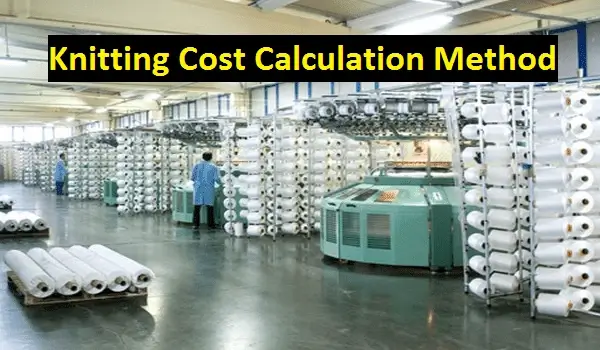Medical Textiles: Types, Properties, Applications and Advantages
Medical textile, also known as Medi-textile, is a distinct category of technical textile used in the healthcare industry to produce a range of medical products. It is characterized by comfort, safety, and support for patients. The history of using medical textiles dates back to ancient times when linen bandages were used to dress wounds. With advancements in technology and research, medical textiles have evolved into a large, sophisticated industry and have become an essential component in the production of medical products. This article is all about Medical Textiles, Types of Medical Textiles, Properties, Applications, and Advantages.
Medical textiles are specialty fabrics designed for use in a variety of healthcare applications. These textiles are produced using advanced manufacturing techniques and materials that are safe and effective for medical use. Medical textiles play an important role in modern healthcare and are used for wound dressings, surgical gowns and drapes, bandages, and implantable devices.
These textiles are used for a wide range of applications, from wound dressings to implantable devices. Medical textiles are produced using materials that are safe and effective for medical use, and are rigorously tested to ensure their safety and effectiveness.

Types of Medical Textile:
Medical textiles are classified into two main categories: Non-implantable Medical textiles and Implantable Medical textiles.
A. Non-implantable Medical Textiles
Non-implantable textiles are used for various purposes such as wound dressings, bandages, surgical gowns, drapes, and bedding. These textiles are generally made from cotton, polyester, or a blend of these fibers. Non-implantable textiles are used in a variety of medical applications, including incontinence products, surgical masks, and isolation gowns.
Non-implantable medical textiles are used for external application of the body. It is used to help repair various wounds outside the body. These textile materials must be non-toxic and resistant to allergens and cancer-causing agents.
B. Implantable Medical Textiles
On the other hand, Implantable textiles are used in surgical implants and implantable medical devices such as artificial heart valves, vascular grafts, and hernia meshes. These textiles are specially designed to be compatible with human tissues and to promote the body’s natural healing process. They are usually made from biocompatible materials such as polyethylene terephthalate (PET) and polytetrafluoroethylene (PTFE).
There is a special type of textile structure that is used for various functions inside the human body. The use of implantable material is observed in closure or replacement surgery, soft tissue implants, orthopedic implants, cardiovascular implants, etc., are used in textiles.
Properties of Medical Textiles
Medical textiles have unique properties that make them ideal for use in healthcare settings
Barrier
Medical textile are designed to provide a barrier between the patient and the environment. They can protect the patient from infection and contamination and they can also protect the environment from the patient. Medical textiles with high barrier properties can prevent the infection of bacteria, viruses and other pathogens.
Comfort
Medical textile should be comfortable for the patient to wear. They should not irritate the skin and should be breathable and moisture-wicking to prevent moisture and heat build-up. Comfortable-to-wear medical textiles can help improve patient outcomes and reduce the risk of complications.
Durability
Medical textile should be durable and long lasting. They should be able to withstand repeated use and washing without losing their properties. Sustainable medical textiles can help reduce waste and save money over time.
Biocompatibility
Medical textile should be biocompatible, meaning they will not cause any adverse reactions in contact with living tissue. Biocompatible textiles are essential for implantable medical devices, as they can prevent rejection and promote healing.
Functions and Application of Medical Textile:
Medical textiles are used for a wide range of applications in the healthcare industry. Some common applications of medical textiles includethe following. Medical textiles have a wide range of functions and applications in the healthcare industry. Some of the key functions of medical textiles are:
1. Wound Dressings: Medical textiles are used in the production of wound dressings that promote healing and reduce the risk of infection. These dressings are designed to absorb exudate and maintain a moist environment that accelerates the healing process.
2. Bandages: Medical textiles are used to manufacture bandages that provide support and protection to injured body parts. They are designed to be elastic, breathable, and comfortable to wear.
3. Surgical Gowns and Drapes: Medical textiles are used to manufacture surgical gowns and drapes that provide a sterile environment for surgical procedures. These textiles are designed to be durable, water-resistant, and able to withstand the rigors of sterilization.
4. Implants: Medical textiles are used in the production of implants such as artificial heart valves and hernia meshes. These textiles are specially designed to be bio-compatible and to promote the body’s natural healing process.
5. Incontinence Products: Medical textiles are used in the production of incontinence products such as adult diapers and pads. These textiles are designed to be comfortable, absorbent, and able to control odor.
6. Compression Garments: Medical textiles are used in the production of compression garments that provide support and promote blood flow. These garments are commonly used to treat conditions such as deep vein thrombosis, lymphedema, and varicose veins.
Wound dressings
Medical textile wound dressings are used to promote healing and prevent infection. Wound dressings can be made from a variety of materials, including cotton, polyester, and hydrogel.
Surgical gowns and drapes
Surgical gowns and drapes are made from medical textiles that provide a barrier between the patient and the surgical team. These textiles are designed to be comfortable, breathable, and moisture-wicking to prevent heat and moisture build-up during surgery.
Bandage
Bandages are used to support injured limbs or secure wound dressings in place. Medical textile are used to make bandages that are comfortable, breathable and capable of providing the necessary support.
Implantable devices
Medical textile are used to make various implantable devices such as artificial blood vessels, hernia mesh and heart valves. These textiles are designed to be biocompatible, durable and able to support tissue growth.
Innovations in Medical Textiles:
The field of medical textiles is constantly evolving, with new materials and technologies being developed to improve patient outcomes. Some of the recent innovations in medical textiles include:
a) Smart textiles: Smart textiles are fabrics that are able to sense and respond to their environment. In the healthcare industry, smart textiles are being developed to monitor vital signs, detect infections, and provide drug delivery.
b) Antibacterial textiles: Antibacterial textiles are fabrics that are treated with antimicrobial agents to reduce the risk of infection. These textiles are commonly used in wound dressings and surgical gowns.
c) Biodegradable textiles: Biodegradable textiles are fabrics that are designed to break down over time, reducing the risk of complications and the need for additional surgeries.
The Future of Medical Textiles
The future of medical textiles is bright, with new materials and manufacturing techniques being developed all the time. Advances in nanotechnology, for example, are allowing the production of textiles with unique properties, such as the ability to release drugs or monitor vital signs.
Medical textiles are an essential part of modern healthcare, with a wide range of applications in wound care, surgery, and implantable devices. These textiles have unique properties that make them ideal for use in a healthcare setting.
Conclusion:
Medical textile is a specialized category of functional textiles highly focused on healthcare issues. It is an emerging sector of textiles having a lot of potential and growth. Recently, it has developed a lot. And continue to grow with a lot of innovation.



